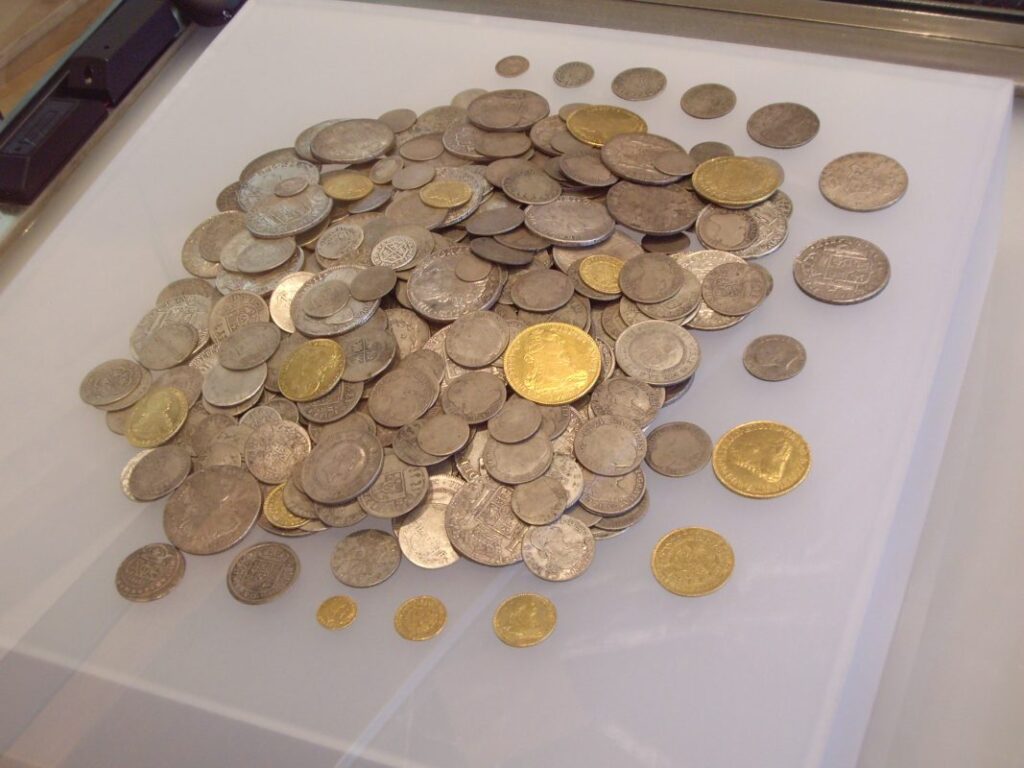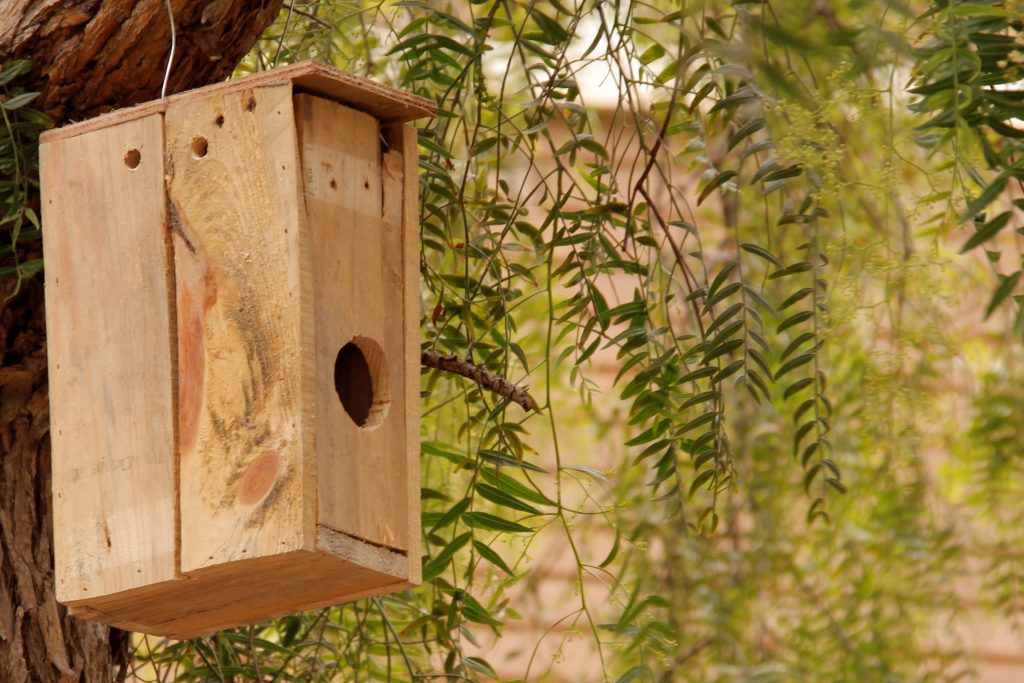The Treasure of Sant Joan d'Alacant
This extraordinary set of coins from contemporary times was found in our municipality on April 13, 1963. It is the most interesting and important treasure of these characteristics in the province of Alicante due to the richness and attractiveness of its coins, due to the splendid state of conservation of some of them and because it is an excellent example of gold coinage and, above all, of silver that was in circulation in the L’Alacantí region during the first quarter of the 19th century. Currently, the MARQ (Provincial Archaeological Museum of Alicante) is in charge of its custody.
It is made up of 15 gold coins and 486 silver, minted by the kings and pretenders to the throne between Philip V (1700-1746) and Archduke Charles (1701-1714) and King Ferdinand VII (1808-1833). The oldest ones date back to 1708 and the most modern ones are real coins of 4 minted in 1823. The fact that the latter barely show wear indicates that they circulated little, which allows us to deduce that the treasure was hidden in 1823.
Thanks to the documentary work carried out, it has been possible for us to know the circumstances surrounding this discovery. Of vital importance have been the files kept by the MARQ, the file archived in the General Administration Archive (AGA, Alcalá de Henares) “Finding of coins in the San Juan estate (Alicante) in the estate of D. Vicente Ferrer Escrivá” and the press news of the time. All this completed with interviews with people present at the time of discovery or with their relatives.
Thus, we know that this treasure was found in the house located at number 6 Colón Street in Sant Joan d’Alacant when renovation work was being carried out by the person who had just bought the home. At that time, the owner of the house, Vicente Ferrer Escrivá, José Sala Pastor and Francisco Gosálbez Sala were working. When they were preparing to demolish a wall of the house, it was discovered that a space had been left in it in which a kitchen pot of about 20 cm in diameter had been stored, inside which the coins were kept.
A few hours later, Vicente Ferrer Escrivá, complying with the legislation in force at the time, which established that the antiquities found by chance were the property of the State, went to the City Hall with the set of coins and the pot, which were deposited and guarded there after carrying out the of an inventory. From there, after a series of reports, on June 27 of the same year, the Minutes of deposit of the set in the Excma were formalized. Provincial Council of Alicante. On October 10, Manuel Jorge Aragoneses, then director of the Archaeological Museum of Murcia, was appointed as appraiser, proceeding to count, catalog and evaluate the complex. Finally, in 1967 the Administration acquired the treasure for the Alicante Archaeological Museum, recognizing Vicente Ferrer Escrivá as the discoverer and owner of the property where the set was found.
The numismatic study carried out and the data obtained from the circumstances of the discovery have made it possible to draw historical conclusions of great value. Although more than half a century has passed, the data obtained has allowed us to reconstruct a micro-history about the socioeconomic profile of the person who hid the treasure and which is coherently framed with the events experienced in the region of L’Alacantí during the year 1823. This date is marked by the entry into Spain of the One Hundred Thousand Sons of San Luis and the end of the Liberal Triennium. The episode was accompanied by absolutist repression suffered by the liberals of Alicante as a result of the city’s capitulation to the absolutist troops in November 1823. It is entirely logical, in this environment of uncertainty and instability, that the original owner of the coins would want to hide them.
At that time, the population of Sant Joan d’Alacant, whose area was within what was known as Huerta de Alicante, based its economy on agriculture. After studying the documents, it was concluded that the person who hid the treasure was Antonio Quereda Chápuli, a native of Sant Joan d’Alacant, owner of the house the year in which the set was deposited, a day laborer and who died without making a will and without direct heirs. This type of hiding place reveals that it must have been built by the owner of the treasure and the house, since it was conveniently prepared and designed to store, in a safe place and for years, an accumulation of wealth with the intention of recovering it later. But upon his death he did not inform anyone of its existence and it remained hidden there for 140 years until his descendants sold the house in 1834, ignoring what the property hid.
This discovery, even half a century later, remains in the collective consciousness of Sant Joan d’Alacant since it was a great event for the municipality given its nature and circumstances. Furthermore, it is an example of the civic and exemplary attitude of the people who found it, allowing the treasure to reach us in its entirety, preserving it as an exceptional document of the history of Sant Joan and Alicante.

Set of coins from the treasure of Sant Joan d’Alacant

